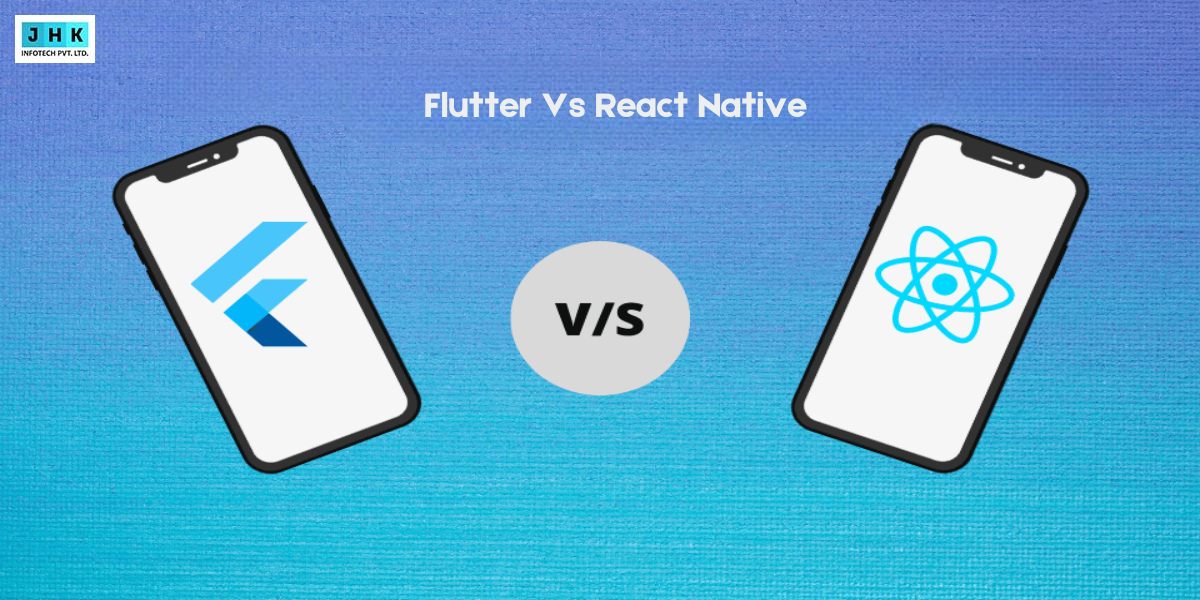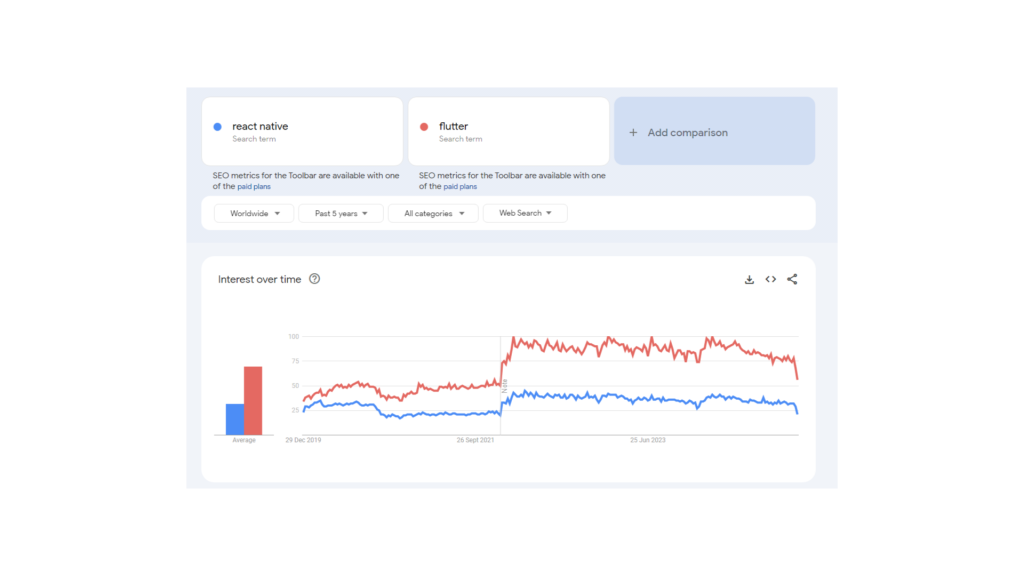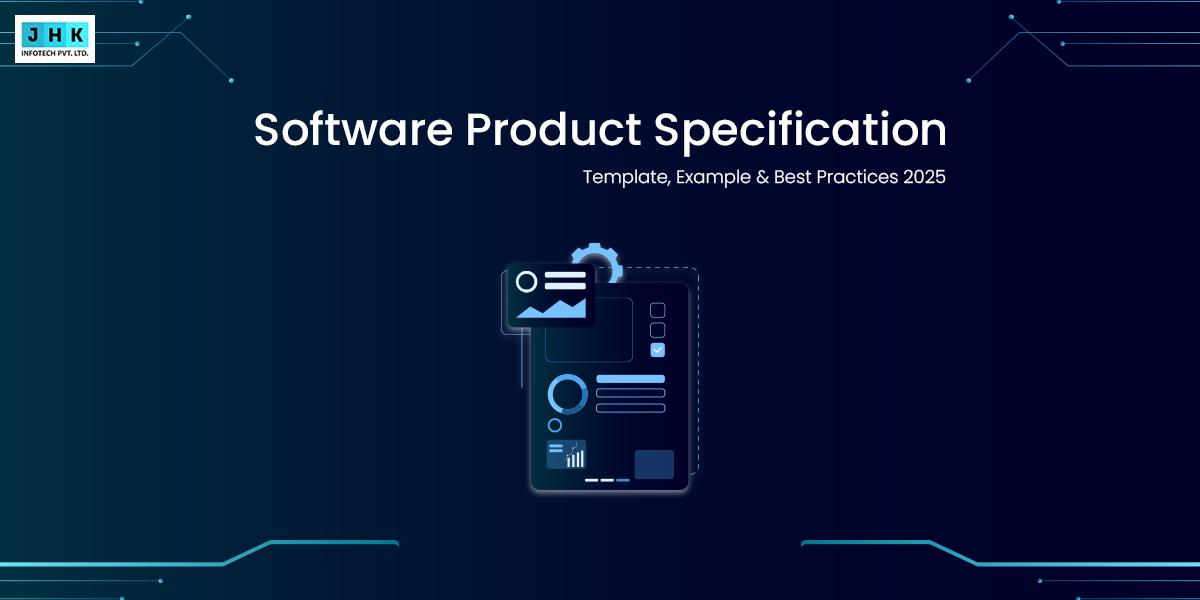React Native vs Flutter: Which Is Better for App Development?

The Growing Demand for Cross-Platform Development
Cross-platform mobile development has become an essential strategy for businesses aiming to create cost-effective, high-quality apps across multiple platforms. The demand for frameworks that allow developers to write code once and deploy it on both iOS and Android devices has surged. In today’s competitive app development market, the need for such frameworks continues to rise as businesses look for faster, more efficient ways to reach a larger audience. React Native and Flutter are two prominent solutions that have emerged to meet this demand.
Why Framework Selection Matters for App Success
Choosing the right framework is critical to the success of any app development project. The performance, maintainability, scalability, and user experience of an app depend largely on the underlying framework. Selecting a framework that aligns with the project’s objectives—whether it’s rapid development, a polished user interface, or long-term sustainability—is vital to achieving desired outcomes. React Native and Flutter each offer distinct advantages and challenges that can impact both the development process and the final product.
React Native
Origin and Evolution of React Native
React Native was developed by Meta (formerly Facebook) in 2015 as a solution to the need for a cross-platform framework that could handle complex mobile applications. Originally, it was conceived as a way to enable iOS development using JavaScript, but the framework quickly grew to support Android as well. React Native allowed developers to reuse code across both platforms, thus reducing development time and effort.
The Core Philosophy Behind React Native
At its core, React Native is built around the idea of providing native-like performance using web technologies. It merges the versatility of JavaScript with the strength of native components, resulting in a fluid and intuitive mobile experience. This hybrid approach allows developers to leverage web development knowledge while still accessing native device features, making it a popular choice among developers familiar with JavaScript.
Strengths of React Native for Developers and Businesses
React Native’s primary strength lies in its ability to reuse code across multiple platforms, leading to significant time and cost savings. Its large and active developer community ensures that there are plentiful resources, libraries, and plugins to aid development. Additionally, the ease of integrating third-party libraries and tools makes React Native a highly flexible framework for businesses of all sizes.
Flutter
The Birth of Flutter and Google’s Vision
Flutter, introduced by Google in 2017, is a UI toolkit designed to create natively compiled applications for mobile, web, and desktop from a single codebase. Unlike React Native, Flutter doesn’t rely on native components but instead uses its own rendering engine to draw the UI. Google’s vision for Flutter is to provide developers with a rich set of highly customizable widgets and the ability to compile directly to machine code, which offers greater control over performance.
Key Features That Define Flutter
Flutter’s standout features include its hot reload functionality, which allows developers to instantly see changes in the app without restarting it, and its rich set of pre-designed widgets that help speed up the development process. Furthermore, Flutter’s ability to create high-performance apps with a consistent look across all platforms gives it a strong edge in app development.
Flutter’s Unique Selling Points
One of Flutter’s most compelling features is its unified codebase, which simplifies the development process by eliminating the need for platform-specific code. This allows for greater consistency across devices and operating systems. Additionally, the framework’s performance is enhanced by its direct compilation to native ARM code, ensuring smooth animations and quick load times.
Key Similarities Between React Native and Flutter
JavaScript in React Native: Widespread Adoption and Familiarity
React Native leverages JavaScript, a programming language renowned for its widespread adoption and global use. This familiarity makes it an attractive choice for web developers looking to transition into mobile app development. JavaScript’s widespread adoption also means that developers have access to a vast ecosystem of libraries, tools, and resources.
Dart in Flutter: Simplified Syntax and Robust Performance
Flutter, on the other hand, uses Dart, a language developed by Google specifically for app development. Dart is designed to be easy to learn and offers high performance due to its ahead-of-time (AOT) compilation. While less popular than JavaScript, Dart is growing in popularity among developers for its simplicity and performance benefits.
Performance Metrics
React Native’s Bridge Mechanism: Pros and Cons
React Native communicates between the JavaScript code and native modules through a bridge, which can lead to performance bottlenecks, especially in applications with high computational demands. While the framework is generally fast, complex animations and heavy app logic can sometimes cause delays in performance.
How Flutter Achieves Superior Rendering Speeds
Flutter overcomes the performance limitations seen in React Native by compiling directly to native machine code. This approach allows for faster rendering and smooth animations, even for resource-intensive applications. The framework’s custom rendering engine ensures that the app maintains consistent performance across different devices.
Real-World Performance Comparisons
In terms of performance, Flutter often outperforms React Native, especially in apps with complex UIs and animations. React Native’s reliance on a bridge mechanism can sometimes lead to slower performance, whereas Flutter’s direct compilation provides superior speed and efficiency.
User Interface Design Capabilities
React Native: Leveraging Native UI Components
React Native enables developers to tap into native UI components, providing seamless access for both iOS and Android platforms. This approach ensures that apps have a native look and feel on each platform. However, the trade-off is that developers may need to write platform-specific code to achieve a consistent experience.
Flutter: Customizable Widgets for Distinctive UI Designs
Flutter takes a different approach by providing a wide array of pre-designed widgets that developers can customize to create unique UIs. These widgets are consistent across platforms, giving developers more control over the design and ensuring that apps look the same on all devices.
Comparing Animation Capabilities in Both Frameworks
Flutter’s ability to create fluid and smooth animations is a key advantage, as it is powered by its custom rendering engine. React Native, while capable of creating animations, may not perform as well when handling complex transitions or animations due to its bridge architecture.
Development Process and Experience
React Native: A Beginner-Friendly Framework for Web Developers
React Native is ideal for web developers transitioning into mobile app development. Its use of JavaScript and familiar web technologies makes it easy for developers to get started quickly. Additionally, the large community support ensures that there are plenty of resources available for learning and troubleshooting.
Flutter: Streamlined Development with Integrated Tools
Flutter’s development experience is enhanced by its rich set of integrated tools, including a comprehensive IDE and the hot reload feature. These tools make it easier for developers to build and test apps quickly, without the need for external dependencies.
Debugging and Hot Reload Features: Side-by-Side Analysis
Both React Native and Flutter offer hot reload features that allow developers to see changes in real-time. This functionality greatly accelerates the development process and makes debugging easier. However, Flutter’s hot reload is often considered faster and more stable due to its tighter integration with the framework.
Cross-Platform Consistency
Bridging the Gap with React Native’s APIs
React Native achieves cross-platform consistency by using JavaScript APIs that interact with native modules. While this allows for significant code reuse, there may be occasional inconsistencies between platforms that require additional code adjustments.
Flutter’s Unified Codebase: Ensuring Seamless App Behavior
Flutter’s unified codebase is designed to ensure consistency across both iOS and Android platforms. By using its own rendering engine and widget system, Flutter eliminates the need for platform-specific code, offering a seamless user experience on all devices.
Community and Ecosystem
React Native’s Established Ecosystem and Plugins
React Native features a robust and well-established ecosystem, brimming with a wide array of libraries, plugins, and tools.This robust ecosystem makes it easier for developers to find pre-built solutions and integrate third-party services, accelerating development time.
Flutter’s Rapidly Expanding Libraries and Tools
Flutter’s ecosystem is growing rapidly, with an increasing number of libraries and plugins being developed by both Google and the open-source community. Although smaller than React Native’s, Flutter’s ecosystem is highly focused and well-documented.
Comparing Community Support and Resources
React Native benefits from a larger, more established community, which means there is a wealth of tutorials, resources, and third-party tools available. Flutter’s community is newer but quickly growing, offering strong support and innovation.
Testing and Debugging Tools
Testing Options in React Native: Limitations and Workarounds
React Native provides a variety of testing options, including unit tests, integration tests, and end-to-end tests. However, its reliance on third-party libraries can sometimes lead to integration challenges and inconsistencies in testing.
Flutter’s Comprehensive Testing Framework: Unit, Widget, and Integration Tests
Flutter offers a more integrated testing solution, providing tools for unit, widget, and integration testing right out of the box. This comprehensive framework simplifies the testing process, ensuring that apps are robust and bug-free.
Third-Party Integrations
React Native: A Vast Library of Plugins and APIs
React Native excels in third-party integrations, offering access to a wide array of plugins and APIs that can be easily integrated into projects. This flexibility is a major advantage for developers who need to add specialized functionality.
Flutter: Built-in Features vs. Third-Party Dependencies
Flutter offers a set of powerful built-in features but relies less on third-party plugins compared to React Native. While this can reduce the need for external dependencies, it also means that developers may have to create custom solutions for certain use cases.
Scalability and Flexibility
React Native: Adapting to Large-Scale Applications
React Native is exceptionally scalable, capable of managing large applications effortlessly while maintaining optimal performance. Its flexibility allows for easy integration with other tools and services, making it suitable for businesses of all sizes.

Flutter: Architecting for Scalability and Growth
Flutter’s architecture is designed to handle the complexities of large-scale applications. With its high performance and consistent UI, Flutter is ideal for building scalable apps that need to run seamlessly across multiple platforms.
App Size Considerations
How React Native Manages Dependencies and App Size
React Native’s app size can be impacted by the number of dependencies used in the project. The framework’s reliance on external libraries means that managing app size requires careful consideration of the dependencies included in the build.
Flutter’s Trade-Offs with Initial App Size
Flutter apps typically have a larger initial file size due to the inclusion of its rendering engine and other core components. Nevertheless, this compromise is frequently warranted by the superior performance and seamless consistency achieved across multiple platforms.
Cost Implications of Each Framework
React Native: Development Cost Analysis for Startups
React Native’s use of JavaScript and its extensive ecosystem make it a cost-effective choice for startups looking to minimize development expenses. Developers can leverage existing skills, reducing the need for specialized training.
Flutter: Balancing Initial Investments with Operational Savings
Flutter requires an upfront investment in learning Dart and adapting to its architecture. However, the framework’s efficiency and performance can lead to long-term savings in maintenance and scaling costs.
Security and Risk Management
React Native’s Approach to Security Challenges
React Native offers a variety of security features to help protect user data and prevent vulnerabilities. However, developers must remain vigilant in integrating best practices, especially when using third-party libraries.
Built-in Security Measures in Flutter
Flutter includes several built-in security features, such as secure storage and encryption capabilities. Its direct compilation to native code helps mitigate potential security risks by reducing the reliance on external components.
Use Cases for React Native
Ideal Scenarios for Choosing React Native
React Native is ideal for apps that require rapid development, cost efficiency, and access to native features. It works well for startups and businesses looking for a solution that balances speed and quality.
Industries That Benefit from React Native’s Capabilities
React Native is widely used in industries like e-commerce, social media, and entertainment, where fast delivery and cross-platform support are key. It’s particularly useful for apps with moderate complexity.
Use Cases for Flutter
The Versatility of Flutter Across Platforms
Flutter’s versatility makes it suitable for apps that need to run on multiple platforms, including mobile, web, and desktop. It is an ideal choice for businesses that want to provide a seamless experience across all devices.
Why Some Businesses Prefer Flutter for Complex Projects
Flutter’s rich set of features and its ability to deliver high-performance applications make it an attractive choice for businesses developing complex apps with advanced UI and animation requirements.
Comparison of Developer Communities
The Role of React Native’s Longstanding Developer Base
React Native has a large, established developer community that provides valuable resources, tools, and libraries. Its longevity in the market has led to a robust ecosystem, making it easier for developers to find support.
How Flutter’s Community Is Shaping Its Future
Flutter’s community, though newer, is rapidly growing and highly engaged. Google’s backing has encouraged many developers to adopt the framework, contributing to its expanding ecosystem and ensuring a bright future.
Framework Stability and Long-Term Support
React Native: Updates and Ongoing Development by Meta
React Native benefits from ongoing development by Meta, ensuring that the framework remains stable and up-to-date with the latest advancements in mobile technology.
Flutter’s Vision and Multi-Platform Potential Backed by Google
Flutter is supported by Google, which is committed to its long-term success. The framework is constantly evolving, with a focus on expanding beyond mobile to include web and desktop applications.
Tooling and Documentation
React Native’s Developer Resources: Strengths and Weaknesses
React Native offers comprehensive documentation and a wealth of developer tools. However, due to its reliance on third-party libraries, developers may occasionally encounter integration challenges.
Flutter’s Developer Tools: Comprehensive and User-Friendly
Flutter’s tools are highly regarded for their ease of use and integration. The framework offers extensive documentation and an intuitive development environment, making it a strong choice for developers.
Business Considerations
Time-to-Market Comparison: React Native vs. Flutter
React Native offers a shorter time-to-market for businesses seeking to develop apps quickly, due to its use of JavaScript and the ability to reuse code across platforms. Flutter, while more efficient for high-performance apps, may require more initial development time.
How Each Framework Impacts Product Iteration Cycles
Both React Native and Flutter enable rapid iteration, but React Native’s vast ecosystem of plugins allows for quicker adjustments. Flutter’s unified codebase and performance advantages make it suitable for projects that require fewer iterations but need robust performance.
Future Trends
The Roadmap for React Native in the Coming Years
React Native’s future development is likely to focus on enhancing performance and bridging the gap between native and web technologies. The framework’s adoption of more native components will improve the overall app experience.

Flutter’s Evolution and Potential Beyond Mobile Development
Flutter’s evolution is set to extend beyond mobile, with its growing use for web and desktop applications. Google’s investment in multi-platform support ensures that Flutter will continue to be an essential tool for developers in the future.
Final Thought
React Native excels in rapid development, a large ecosystem, and ease of use for web developers, while Flutter offers superior performance and cross-platform consistency. Each has its strengths and is suited to different project requirements.
When choosing between React Native and Flutter, developers should consider the specific needs of their projects. React Native is well-suited for quick development cycles, while Flutter shines in high-performance, visually complex apps.






